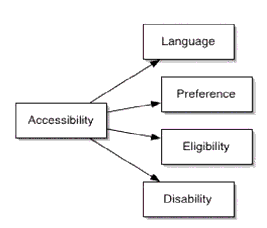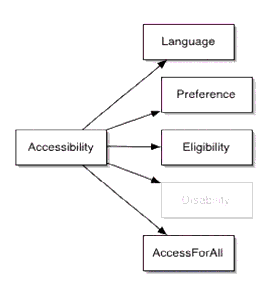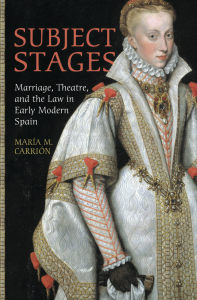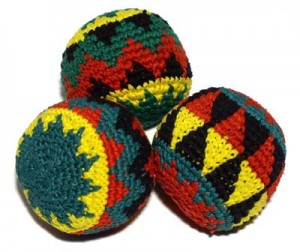My interpretation of accessibility, in my own humble words, is not complicated, if reaching that as a sound pedagogical stage is not in today’s ever-changing university climate. I consider accessibility the state, stage, or platform, the surface that allows for everyone involved in teaching-learning spaces, to be in the same page. When talking about OERs and copyright last week, Yu Li and Marshall touched upon all students and instructors being there, in the same page, and how the negotiation of rights and responsibilities of and for all could become a hindrance, an obstacle, and not a possibility.
Accessibility is the stage when, if hindrances and obstacles happen because of differences in learning time, physical, mental, or emotional disabilities, because of materials not being readily available to students who cannot see or hear, or a professor who cannot understand why students do not understand, those hindrances and obstacles can fade because someone, something, is available, or is made available.
Come to think about it, the more the university’s goals are moved closer and closer to corporate ideals, to sheer pragmatism over imagination, to producing without necessarily thinking, I wonder how can that page ever be the same for all? Is a better university (whatever that means today) a hindrance to learning? That is one monumental question which keeps looming larger and larger in my pedagogical unfolding.

https://www.imsglobal.org/accessibility/acclipv1p0/imsacclip_infov1p0.html
Alas, the best thing about being human is that there is always another day. A new thing can always be learned. I quote from a website by IMS Global Learning Consortium. They give me some visual and verbal food for thought: once upon a time, the sequence of accessibility (which IMSGLC organize as a merging of “language,” “preference,” “eligibility,” and “disability” in the “old scheme of things”) consider the latter area, “disability,” an exception, for it would represent an extra-ordinary set of tools, arrangements, and accommodations. At Emory, the artist once known as Office of Disability is now the Office of Equity and Inclusion. This is a big step, one we all as faculty can and should factor in our teaching, be it face to face, online, or blended. It seems that we’re actually moving along the lines proposed by IMSGLC, that is to say, removing the “disability” from being an obstacle and thinking about giving “access to all.”

https://www.imsglobal.org/accessibility/acclipv1p0/imsacclip_infov1p0.html
Big question is, if everyone is pulling towards their own little corner of earth, if education is becoming the process, or worst case scenario, a mere excuse to reach a strictly pragmatic or vocational plateau (as my nephew keeps telling me, “to just obtain that little piece of paper” to get his parents off his back, so he can be the best airplane mechanic), then how can I make materials, questions, and possible answers about legal history, architecture, mysticism, drama, theater, film, and performance art, about the Hispanic world (whatever that is today) accessible to all? At Emory I have some truly outstanding resources, such as the ECDS, JSTOR, the Emory Libraries, the ECFDE, the ECLC, and all the other marvelous deposits, offices and centers at our disposal.
For as long as I breathe and stay in my position as Professor of Comparative Literature and Spanish, I will keep living accessibility, which as I recently learned from a wise dictionary, is “the quality of being available when needed.” Not a coincidence that in my evaluations of over three decades in four different centers of higher education of the highest caliber, all my students have coincided in one same page: to agree that I am readily available to communicate and explain things to whomever asks and wants to know. Stay tuned, it’s a mad, mad world, and we’re coming!

